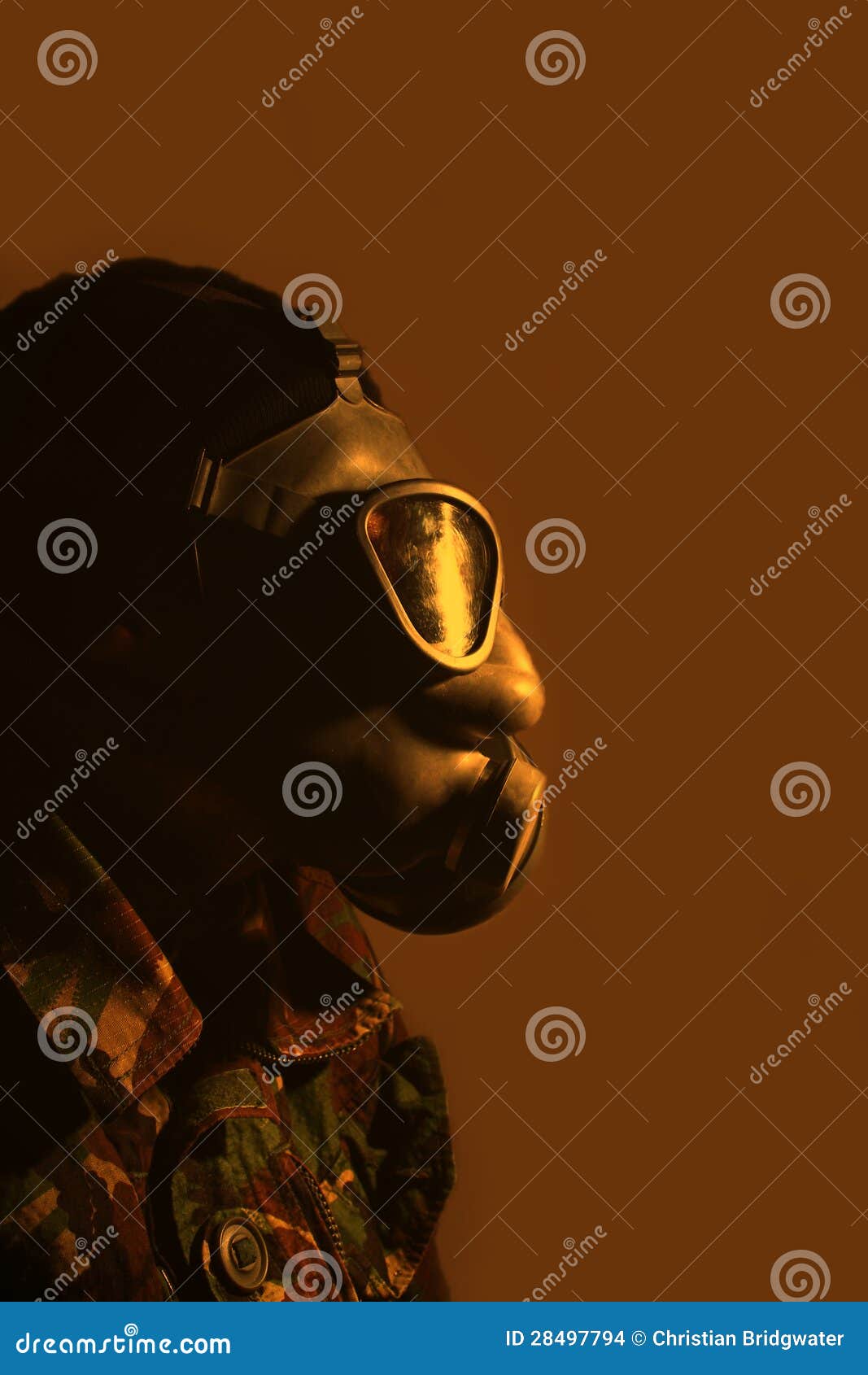

More than three dozen Japanese-American names in a row. Names like Tanamachi, Kawasaki, Higashi, Sasaki. Where Louis Bessho's name appears on, the list begins to take on a curious similarity. The commendation, presented by the Office of the Army's Chief of the Chemical Warfare Service, says: "These men participated beyond the call of duty by subjecting themselves to pain, discomfort, and possible permanent injury for the advancement of research in protection of our armed forces."Īttached was a long list of names. "Generally, they're just kind of generic about doing a good job," he says. David Bessho, who's now retired from the Army, says the award stood out from several others displayed beside it. One evening, sitting in the living room, David Bessho asked his dad about an Army commendation hanging on the wall. His son, David Bessho, first learned about his father's participation as a teenager.
GAS MASK SOLDIER FULL
For years, he carried around a jar full of the flakes to try to convince people of what he went through.īut while Edwards wanted people to know what happened to him, others - like Louis Bessho - didn't like to talk about it.
GAS MASK SOLDIER SKIN
Susan Smith, a medical historian at the University of Alberta in Canada, published an article in The Journal of Law, Medicine & Ethics.ĭuring outbreaks, his skin falls off in flakes that pile up on the floor.
GAS MASK SOLDIER PATCH
In 1991, federal officials for the first time admitted that the military conducted mustard gas experiments on enlisted men during World War II.Īccording to declassified records and reports published soon after, three types of experiments were done: Patch tests, where liquid mustard gas was applied directly onto test subjects' skin field tests, where subjects were exposed to gas outdoors in simulated combat settings and chamber tests, where men were locked inside gas chambers while mustard gas was piped inside.Įven once the program was declassified, however, the race-based experiments remained largely a secret until a researcher in Canada disclosed some of the details in 2008. It causes painful skin blisters and burns, and it can lead to serious, and sometimes life-threatening illnesses including leukemia, skin cancer, emphysema and asthma. Mustard gas damages DNA within seconds of making contact. And I'm not sure how you repay such a debt," she says. government needs to recognize the men who were used as test subjects while it can still reach some, who are now in their 80s and 90s.

Segregated troops practice movement in protective gear at Edgewood Arsenal in Maryland in the early 1940s. So I think particularly for us in uniform, to hear and see something like this, it's stark. "And I think we have probably come as far as any institution in America on race. "The first thing to be very clear about is that the Department of Defense does not conduct chemical weapons testing any longer," he says. Steve Warren, director of press operations at the Pentagon, acknowledged NPR's findings and was quick to put distance between today's military and the World War II experiments. And they were sworn to secrecy about the tests under threat of dishonorable discharge and military prison time, leaving some unable to receive adequate medical treatment for their injuries, because they couldn't tell doctors what happened to them.Īrmy Col. They received no follow-up health care or monitoring of any kind. Most do not have proof of what they went through. Their reactions were used to establish what was "normal," and then compared to the minority troops.Īll of the World War II experiments with mustard gas were done in secret and weren't recorded on the subjects' official military records. White enlisted men were used as scientific control groups. Rollins Edwards as a young soldier in 1945 at Clark Air Base in the Philippines.


 0 kommentar(er)
0 kommentar(er)
